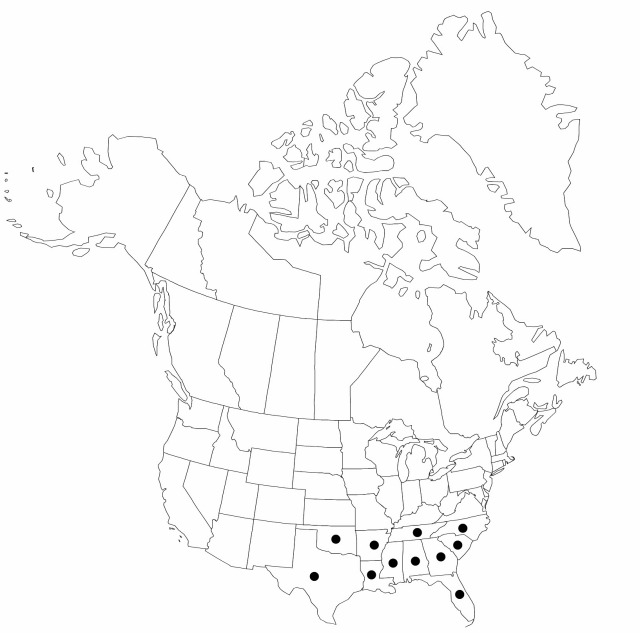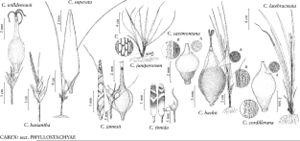Difference between revisions of "Carex basiantha"
Syn. Pl. Glumac. 2: 232. 1855.
FNA>Volume Importer |
FNA>Volume Importer |
(No difference)
| |
Revision as of 19:06, 24 September 2019
Culms spreading to nodding, (10.7–)18–39 cm, 0.5–0.8 of total plant height. Leaves: basal sheaths pale brown to dark brown; blades green, exceeding culms, 1.4–3.7 mm wide, herbaceous, margins green, smooth or scabrous. Lateral spikes 1–4, basal, on nodding peduncles. Terminal spikes with staminate portion 4–61-flowered, (4–)12.7–25.6 × 0.7–1.4 mm; pistillate portion 2–4(–6)-flowered. Pistillate scales green, sometimes tinged with white or reddish brown, (0.9–)1.2–2.4 mm wide, apex attenuate to green awns; distal scales with hyaline margins 0.3–0.8 mm wide, not more than 1.5 times as wide as and not concealing perigynia, apex acute, awnless. Staminate scales green or tinged with light brown, ovate, 2.2–3.9 × 1.6–2 mm, margins free but enfolding scales above, hyaline, white, apex obtuse, erose. Anthers 0.8–1.5 mm. Perigynia pale green to pale brown, often speckled reddish brown, narrowly ovoid or lance-ovoid, (5.8–)6.2–7.6(–8) × 1.4–2 mm, tightly enveloping achenes, apex gradually tapering; beak (2.5–)2.7–3.7(–4.3) mm, scabrous. Stigmas filiform, flexuous, long, slender, strongly papillose. Achenes brown, oblong, (2.4–)2.6–3(–3.4) × (1.3–)1.5–1.7(–1.9) mm.
Phenology: Fruiting spring–summer (mid Mar–mid Jul).
Habitat: Neutral or slightly acidic soils in mesic to wet mesic deciduous forests, usually on lower slopes above flood plains of rivers and streams
Elevation: 50–1000 m
Distribution

Ala., Ark., Fla., Ga., La., Miss., N.C., Okla., S.C., Tenn., Tex.
Discussion
Selected References
None.
